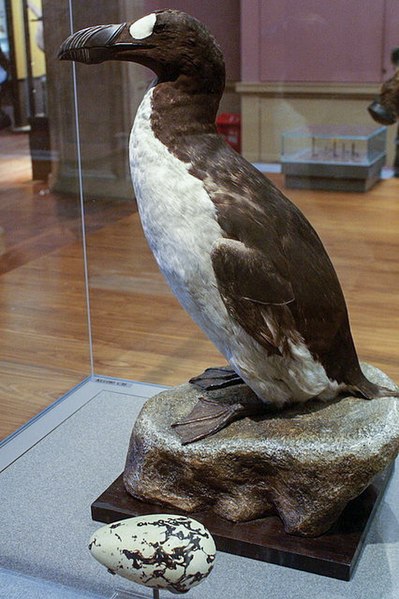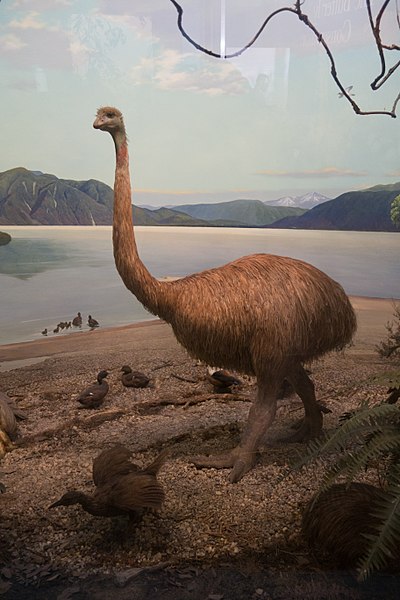The great auk is a species of flightless alcid that became extinct in the mid-19th century. It was the only modern species in the genus Pinguinus. It is not closely related to the Southern Hemisphere birds now known as penguins, which were discovered later by Europeans and so named by sailors because of their physical resemblance to the great auk, which were called penguins.
Great auk
The "Great Auk, Northern Penguin, or Gair-Fowl", wood engraving by Thomas Bewick in A History of British Birds, 1804
Summer (standing) and winter (swimming) plumage, by John Gerrard Keulemans
Paintings showing variation in egg markings, as well as seasonal and ontogenic differences in plumage
Flightless birds are birds that, through evolution, lost the ability to fly. There are over 60 extant species, including the well-known ratites and penguins. The smallest flightless bird is the Inaccessible Island rail. The largest flightless bird, which is also the largest living bird in general, is the common ostrich.
King penguins (Aptenodytes patagonicus). Penguins are a well-known example of flightless birds.
An Okarito kiwi (Apteryx rowi), also known as the rowi
Common ostrich (Struthio camelus). Ostriches are the largest extant flightless birds as well as the largest extant birds in general.
An extinct moa. Until the arrival of humans, New Zealand's only mammals were bats and seals, resulting in many bird species evolving to fill the open niches. While many of New Zealand's flightless birds are now extinct, some, such as the kiwi, kākāpō, weka, and takahē have survived to the present day.








